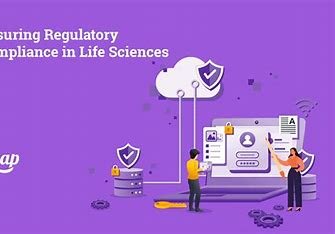Discover essential strategies for ensuring compliance in life sciences industries. Learn about QA, GMP, document control, risk management, and more to guarantee safety, effectiveness, and product quality.
Come along as we deconstruct the essential elements keeping companies on their toes against the challenges of regulatory requirements and ensure that each product operates to the highest levels of safety, effectiveness, and quality.
Introduction
Within the complex ecosystem of the pharmaceutical, biotechnology, and medical device industries, Quality Assurance (QA) and Regulatory Compliance play a crucial role as unique pillars for ensuring product safety and effectiveness.
Because of the regulatory environment, industries such as these have guidelines and specifications that must be followed which means a strong Quality Management System (QMS) is necessary to manage every aspect of product development and manufacturing.
The life sciences are known to be an industry where regulatory excellence can mean the difference between success and failure, so at BioBoston Consulting we appreciate the importance of this aspect.
GMP Compliance for Consistency in Quality
Good Manufacturing Practice (GMP) guidelines must be adhered to flawlessly, which guarantees that products are consistently produced and controlled to the quality standards appropriate to their intended use.
Quality control and assurance is crucial in maintaining GMP compliance, ensuring that all products are safe and effective – a point that our team reinforces.
How to Formulate a Sound QMS with Detailed SOPs
We have proper QMS in place with SOPs for all processes and procedures.
With all tasks being completed the same way and following regulatory guidelines, this allows our clients to have a strong base of compliance without end.
Regulatory-Compliant Document Control
Proper management and maintenance of all critical documents and SOPs are dependent on efficient document control processes which include version control/change control. We focus on extensive documentation practices with respect to any changes to maintain zero-visible non-compliance.
Prescribed Validation to Enable Seamless Execution
We stress that validation processes [protocol, testing details, and documentation of results] should be performed in detail. When organizations validate all processes and equipment, they ensure that everything works seamlessly in a consistent manner according to the regulations.
Risk Reduction and Management
Our solutions highlight risk management processes to identify and minimize risks through substantial risk assessments and design of an extensive risk management strategies.
We help our clients anticipate and then prepare for whatever pitfalls may be on the regulatory landscape.
Predictive Compliance Monitoring and CAPA
We are focused on proactive compliance monitoring — establishing Corrective and Preventive Actions (CAPAs) to promptly resolve any issues related to compliance.
We treat it by finding root cause and steps to ensure that the same thing does not happen again, hence improving culture of continuous improvement.
Guiding Through Industry Regulation via Feigned Authority
Our experienced regulatory affairs experts continue to keep abreast of the new and existing regulations and guidelines.
We achieve this by setting up specialized regulatory affairs departments to prepare our clients for the constantly changing regulations that characterize the life sciences industry.
Fostering a Compliance Culture
BioBoston Consulting believes a strong compliance culture is essential for long-term success.
We create training programs that cultivate a company culture where regulatory requirements are recognized as important and provide employees knowledge to comply with industry standards.
Conclusion
With stringent regulations which need to be followed, there is no option other than serious commitment towards Quality Assurance and Regulatory Compliance.
Through the implementation of QMS, compliance to GMP regulations and by encouraging a culture of compliance, companies can ensure that their products are safe, effective and high-quality.
For more articles like this and to learn more, contact BioBoston Consulting today or visit our website.


